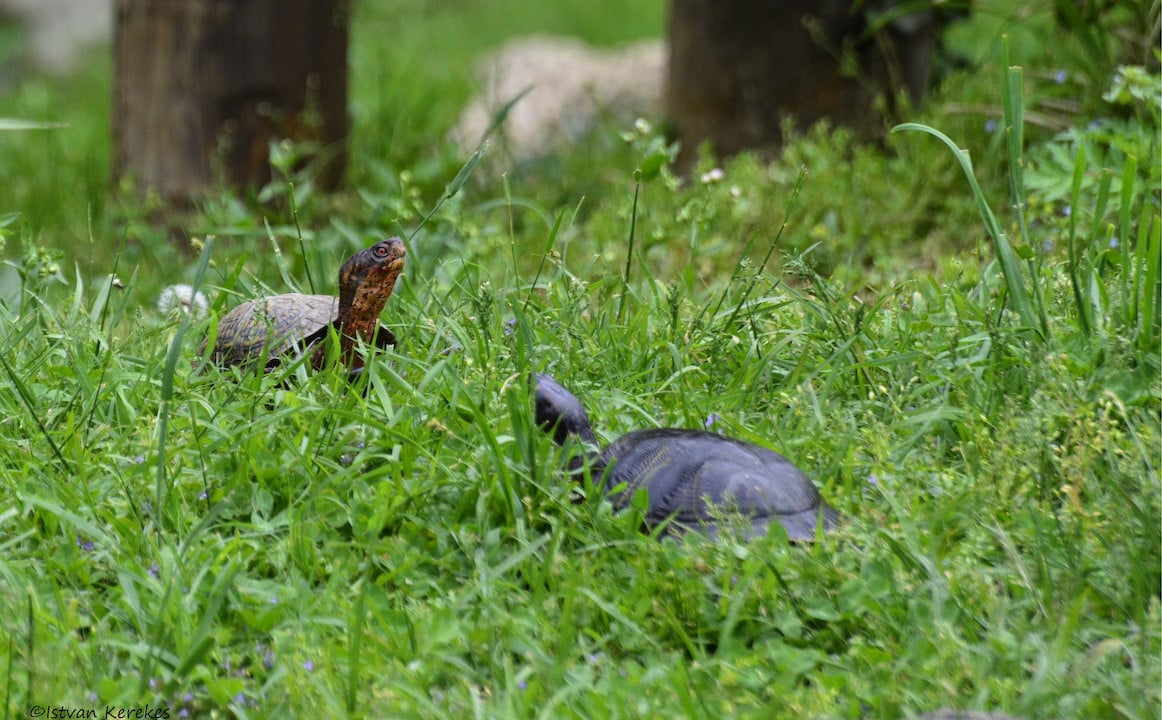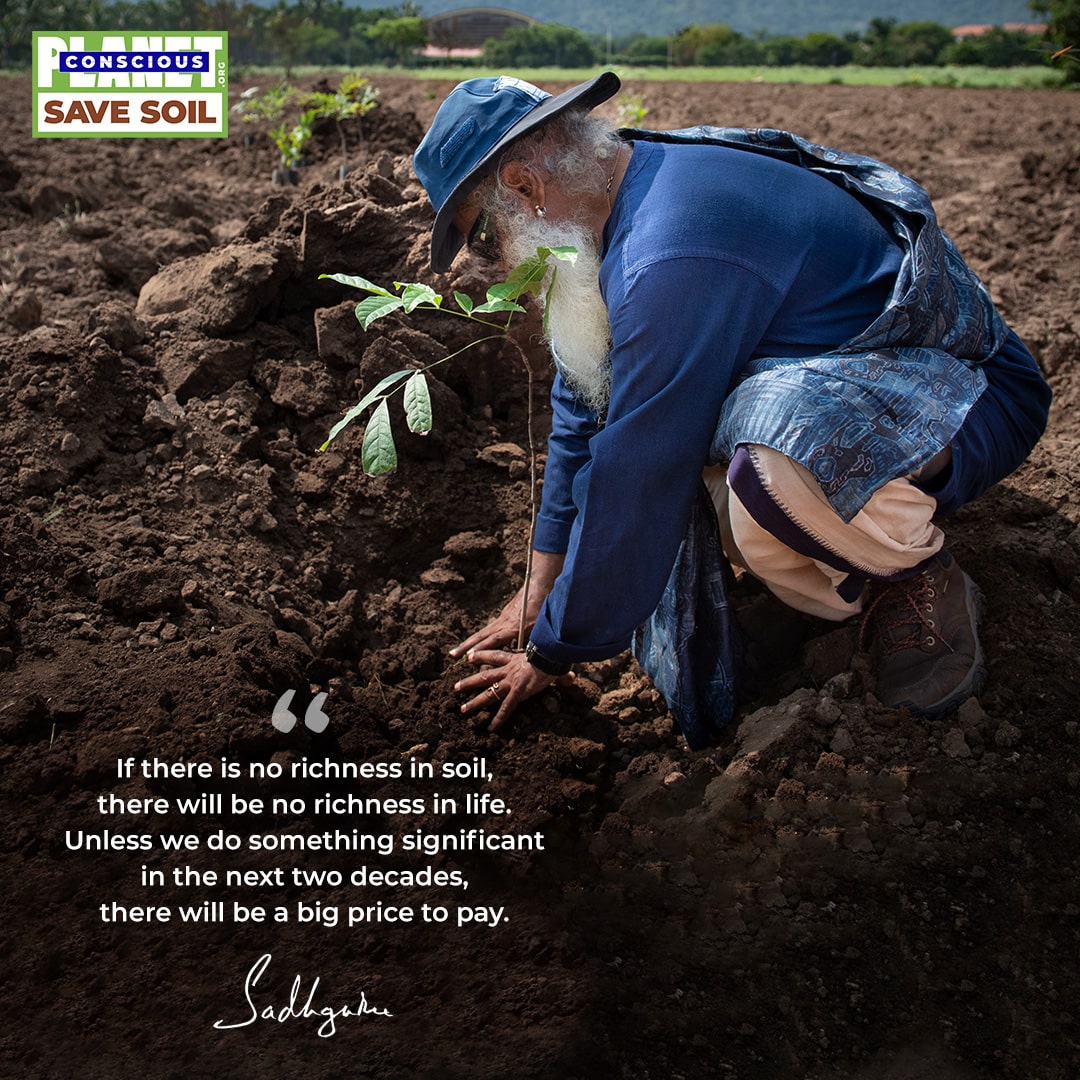
Human civilizations have evolved with various dietary traditions, cuisines, and eating habits. A common misconception among non-vegetarians has been that their diet is immune to problems arising from soil degradation. Meat and poultry products are considered rich sources of protein, minerals, and other micronutrients essential for our bodies’ holistic growth. Conversely, vegetarians have counter-views derived from both medical science and religious philosophies. On this World Soil Day, I aim to go beyond the merits of such arguments and ponder whether anyone on this planet can survive without abundant rich soil.
Life on Earth is an alchemy of four natural ingredients: solar energy, an oxygen-rich atmosphere, liquid water, and fertile soil. Fertile soil is sufficiently rich in biodiversity and organic content. Scientists agree that a handful of healthy soil has a minimum of 3% organic content and over 10 billion microbes and creatures such as earthworms, mites, and ants. Biodiversity plays a very critical role in agriculture. It helps in the production of nutritionally rich farm yields.
Most of us understand the significance of clean air and drinking water for survival, but unfortunately, we miss out on one fundamental resource, i.e., soil. We call it fundamental because the soil is the starting point of our life process. A tiny seed, weighing just a few milligrams, turns into a tree that can weigh up to a ton when planted in fertile soil. “Where does this additional mass come from?” The answer is that plants turn raw materials like soil manure, carbon dioxide, water, and sunlight into food and oxygen through photosynthesis. The food is utilized to sustain and grow the plant itself and becomes the nutrition source for others.

Many meat lovers believe that eating meat is healthy for the planet because it takes the burden of feeding people away from farming. This notion is far from the truth because photosynthesis is the only process that can create food directly out of inorganic matter, making plants the only autotrophs in any food chain. On the other hand, animals being heterotrophs, are entirely dependent on eating other life forms to gain nutrition. When you eat a lamb or a goat, you absorb the nourishment they acquired by eating plants in their diet. That means you can only have a lamb to eat after first having plants to raise the lamb. You may want to ask, “how many plants are needed to raise a lamb?” Let us make this question more precise – “How many kilograms of animal feed is needed to raise 1 kilogram of meat?”.
Several scholars across the world have studied this question extensively. The quantification is done by experimentally tabulating feed conversion ratios for different animals. The feed conversion ratio is calculated by finding the ratio of animal feed required for an animal to gain 1 kg of edible weight. One such research by a group of scientists from the UK, Germany, and Australia found that you need 25 kg of animal feed to produce 1 kg of beef, 15 kg to have 1 kg of mutton, 6.4 kg to have 1 kg of pork, and 3.3 kg to produce 1 kg of poultry [1]. In addition, you need about ten times more water to have 1 kg of meat than you need to raise 1 kg of grain [2]. Contrast this with the fact that our global meat production is estimated to be more than 300 million tonnes annually [3], increasing our overall animal feed requirement to a minimum of 1 billion tonnes annually! Doesn’t that sound crazy? Meat production has grown about five times in the last 60 years, while our population has grown nearly three times [4]. These statistics indicate that we have rapidly expanded our meat consumption, putting tremendous stress on the soil to produce animal feed.
A poor feed conversion ratio does not imply that animals are eco-unfriendly. It only means that meat is an ecologically inefficient food source that can never serve huge populations. But on the other hand, they are incredibly efficient in creating natural manure for the soil. The excreta of many animals, such as cows, rabbits, and poultry, replenishes the topsoil very effectively with organic content [5]. More cattle on the farms reduces our dependence on chemical fertilizers, which harms biodiversity. Many scientists are therefore advising us to cut down our meat consumption significantly. For instance, they say that beef consumption in western countries must fall by 90% and be replaced by five times more pulses and beans to avoid reaching critical environmental limits [6]. Food is a matter of personal choice, and following the advice entirely depends on one’s discretion. Nevertheless, more and more people should be aware of the big picture to at least try their best to enrich our farmlands and make food production more sustainable.
We must understand that the biodiversity of topsoil plays together symbiotically to facilitate plant growth. Microbes promote the exchange of minerals between the soil and the roots of plants and trees, and plants reward those organisms in their soil with photosynthesized glucose. Modern farming practices and the excess use of fertilizers and pesticides have eroded a significant portion of biodiversity and organic content from our topsoil. The corn belt of the United States has already lost about 35% of its topsoil to desertification. Less than 0.3% of organic content is left in large parts of Africa and less than 0.5% in many parts of India. The European Soil Bureau estimates that 74% of topsoil in southern Europe is left with less than 2% organic content.
These are all examples of alarming statistics. Over 65% of the world’s agricultural land is no longer at optimum fertility. Most farmlands are about to lose their fertility in the next 25-40 years, which will cause large-scale global famines. By 2050, we may have 40% less farm production and a population of over 9 billion people.
“So, what should we do about it?” We need to raise public awareness about this problem. We can achieve long-term policies for soil regeneration only when governments and people work together and are committed to the cause. Spiritual leader Sadhguru undertook a mammoth task this summer of riding 30,000 km on his motorcycle from the UK to India, crisscrossing 26 nations to spread the message. Over 70% of our land today is under agriculture. Sadhguru suggests that governments give our farmers carbon incentives and create supply chain policies that facilitate raising the carbon content in the soil to at least 3%.
This approach will significantly benefit solving many food security and climate change problems. If we fail to act soon, the damage may take several centuries to recover. The good news is that his continued efforts are bearing great results. Over 3.6 billion people across the globe have already lent their support to the movement. Over 74 countries have agreed to include policies in their governance to promote soil health. This momentum needs to continue for an actual impact to see daylight.

For more information, please visit https://www.consciousplanet.org/





























